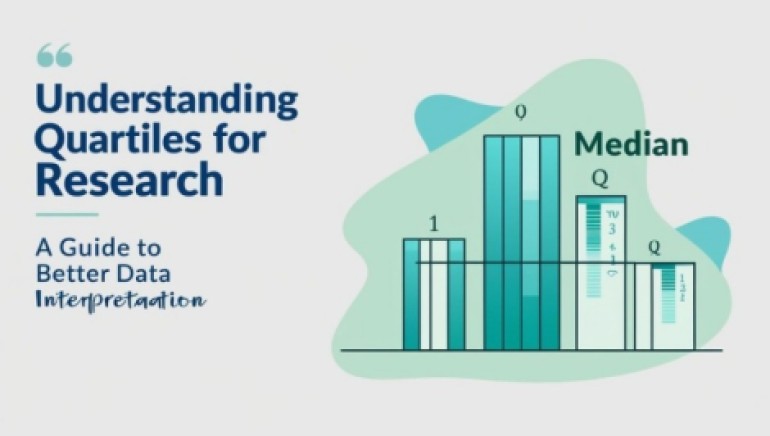Cross-Sectional Study- Complete Overview

Different study designs are crucial to solving the riddles of the world around us in the field of scientific inquiry. The cross-sectional research stands out among these as a useful tool for comprehending the prevalence, patterns, and interactions among variables within a particular population. This article explores what is a cross sectional study design, illuminating their definition, uses, benefits, and drawbacks.
What is Cross-Sectional Study?
Cross-sectional studies provide an intuitive look into the traits and dynamics of populations at a time. The value of their quick access to information about numerous facets of human behaviour, health, and society trends cannot be denied, notwithstanding their limits in establishing causality.
Looking For Online Assignment Help
Get $20 Signup Bonus
So, what type of study is a cross sectional study?
A cross sectional study is one in which we figure out how diseases, risk factors, and health behaviours throughout various groups in healthcare. They also shed light on society patterns like economic distribution, educational achievement, and way of life preferences. Researchers and decision-makers can address public health issues. They can also create intervention strategies by studying cross-sectional data before making judgements.
Now, what is an analytical cross sectional study?
Non-experimental quantitative methods are included in analytical cross-sectional studies. These studies try to gather information from a group of people at one specific time.
Cross-Sectional Vs. Longitudinal Studies
Cross-sectional studies and longitudinal studies are two unique methods of doing research. These methods can be used in different ways to study the relation among variables and its changes.
What is Cross Sectional Study in Research?
This kind of study involves collecting data from a various people. These studies offer an accurate and cost-effective picture of the traits, habits, or circumstances of the population. Cross-sectional studies are used by researchers to find relationships between variables and gauge the frequency of specific phenomena. However, the ability to prove causation from these investigations is constrained because of the lack of temporal sequencing. Cross-sectional studies are useful tools in public health, the social sciences, and market research because they are perfect for examining connections and patterns over a specific time period.
What is Longitudinal Study in Research?
This kind of research keeps track of the same subjects over an extended length of time. Researchers can follow changes, spot patterns, and establish causal linkages between variables by collecting data at various time intervals. Longitudinal studies are well adapted for inspecting evolving courses, evaluating the results and understanding the dynamics of change across time. These investigations require a substantial amount of time and resources. It also needs participant dropout or attrition can affect the validity of the data acquired, even though they offer insightful information about causation.
Example of Cross-Sectional vs. Longitudinal Studies
Let's take a hypothetical scenario involving a health-related research issue.
Is there a relationship between physical activity and mental health?
I. Cross-sectional study
A survey is given to a broad sample of people of various ages to get information on their levels of physical activity and self-reported mental well-being. The study sheds light on the prevalence of mental well-being at that particular moment across various exercise levels. It cannot be determined, nevertheless, whether physical activity directly affects mental health or if other factors are at work.
II. Longitudinal Study
In a longitudinal study, the same group of individuals is followed across a number of years. At various times, researchers compile information on their level of physical activity and mental health. The study can define the rise or fall in physical activity leads to changes in mental health.
The longitudinal study analyses changes in these variables to develop a more precise picture of their relationship. Whereas the cross-sectional study basically captures the link between physical exercise and mental health at one specific point in time. Both study designs provide distinctive insights while meeting various requirements and purposes for the research.
When to Use a Cross-Sectional Design?
Cross-sectional studies are the tools that may be used in various types of research contexts. The following scenarios tell when is cross sectional study being used?
A. Prevalence Assessment
Cross-sectional is an observational study excellent for determining how common a population's particular diseases, behaviours, or traits are. They can be used to find out how smoking, obesity, or chronic diseases affects a particular age group or area.
B. Trends at a Glance
A cross-sectional approach is ideal when researchers wish to take a quick glimpse of trends or patterns within a group without having to follow specific people over time. This is especially useful for getting information about current social, economic, or health-related factors.
C. Comparative Research
Different groups within a population can be compared more easily using cross-sectional designs. To find discrepancies and inform policy choices, researchers can look at factors like income, education, or access to healthcare across a variety of demographic segments.
D. Exploratory Research
A cross-sectional approach might offer preliminary insights that direct additional inquiries when researching a new study field or concept. The findings can be used by researchers to pinpoint potential connections between factors for further investigation.
E. Time and Resource Restrictions
A cross-sectional strategy offers a speedier and more economical alternative to acquire data and generate insights in instances where longitudinal research is impracticable because of a lack of resources or time.
F. Generation of Hypotheses
Cross-sectional studies can aid in the generation of research hypotheses. Cross-sectional connections between variables can provide inspiration for more thorough investigations aimed at establishing causal linkages.

Pay to Get Assignment Writing Expert
How to Perform a Cross-Sectional Study?
Here are the key steps for how to do cross sectional study:
1.Define Research Question: Clearly outline the research question or objective that the study aims to address. This will guide the selection of variables and the population to be studied.
2.Sampling: Choose a representative sample from the target population. Ensure that the sample size is sufficient to draw meaningful conclusions.
3.Data Collection: Collect data through surveys, interviews, questionnaires, or observations. Ensure that the data collection instruments are reliable and valid.
4.Variable Selection: Identify the key variables of interest and any potential confounding variables that might affect the relationship between them.
5.Data Analysis: Use appropriate statistical techniques to analyse the collected data. This may involve calculating prevalence rates, identifying correlations, and exploring patterns within the data.
6.Interpretation: Interpret the findings in the context of the research question. Discuss any observed associations and their implications, considering the limitations of a cross-sectional design in establishing causality.
7.Generalization: Generalize the findings cautiously to the broader population, considering any potential biases in the sample selection.
By following these steps, researchers can effectively design and conduct a cross-sectional study. This will help to provide insights into the relationships between variables.
THE DISADVANTAGES:
Need Assignment Writing Service? Place your Order Now
FAQs On Cross-section Study
Q. What is the purpose of a cross-sectional study?
Q. What are the limitations of cross-sectional studies?
- Causal linkages cannot always be inferred from cross-sectional data.
- There are biases that can affect these findings.
- The temporal relationship between the result and the exposure cannot be established.
Q. How is data collected in a cross-sectional study?
Q. Can cross-sectional studies be used to establish associations?
Q. Are cross-sectional studies suitable for studying trends over time?
Q. How can researchers address limitations in cross-sectional studies?
Q. What is a cross-sectional study in psychology?
Q. How to calculate sample size for a cross sectional study?
- Estimate the size of the population.
- Calculate the degree of confidence.
- Establish the degree of trust.
- Find the standard deviation.
- Create a Z-Score from the confidence level.
Q. How long is a cross sectional study?
Q. How to reduce bias in cross sectional study?
Q. What is cross sectional study in epidemiology?
Q. What is the difference between a longitudinal study and a cross-sectional study?
Q. What are the strengths of a cross-sectional study?
- Relatively quick, inexpensive, and simple to carry out.
- All variables' data is only collected once.
- Capable of determining the prevalence of all factors under investigation.
- Various outcomes and exposures can be investigated.
- Excellent for descriptive analytics and hypothesis generation.


_1724408427.jpg)
_1724335987.jpg)

